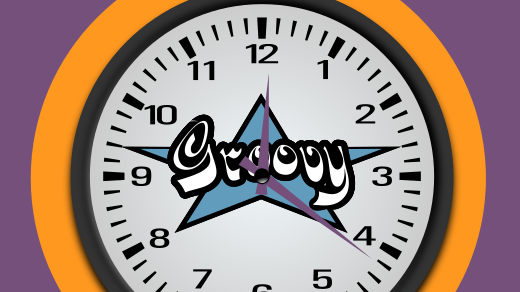Every so often, I need to do some calculations related to dates. A few days ago, a colleague asked me to set up a new project definition in our (open source, of course!) project management system. This project is to start on the 1st of August and finish on the 31st of December. The service to be provided is budgeted at 10 hours per week.
So, yeah, I had to figure out how many weeks between 2021-08-01 and 2021-12-31 inclusive.
This is the perfect sort of problem to solve with a tiny Groovy script.
Install Groovy on Linux
Groovy is based on Java, so it requires a Java installation. Both a recent and decent version of Java and Groovy might be in your Linux distribution's repositories. Alternately, you can install Groovy by following the instructions on the groovy-lang.org.
A nice alternative for Linux users is SDKMan, which can be used to get multiple versions of Java, Groovy, and many other related tools. For this article, I'm using my distro's OpenJDK11 release and SDKMan's latest Groovy release.
Solving the problem with Groovy
Since Java 8, time and date calculations have been folded into a new package called java.time, and Groovy provides access to that. Here’s the script:
import java.time.*
import java.time.temporal.*
def start = LocalDate.parse('2021-08-01','yyyy-MM-dd')
def end = LocalDate.parse('2022-01-01','yyyy-MM-dd')
println "${ChronoUnit.WEEKS.between(start,end)} weeks between $start and $end"Copy this code into a file called wb.groovy and run it on the command line to see the results:
$ groovy wb.groovy
21 weeks between 2021-08-01 and 2022-01-01Let’s review what’s going on.
Date and time
The java.time.LocalDate class provides many useful static methods (like parse() shown above, which lets us convert from a string to a LocalDate instance according to a pattern, in this case, ‘yyyy-MM-dd’). The format characters are explained in quite a number of places–for example, the documentation for java.time.format.DateTimeFormat. Notice that M represents “month,” not m, which represents “minute.” So this pattern defines a date formatted as a four-digit year, followed by a hyphen, followed by a two-digit month number (1-12), followed by another hyphen, followed by a two-digit day-of-month number (1-31).
Notice as well that in Java, parse() requires an instance of DateTimeFormat:
parse(CharSequence text, DateTimeFormatter formatter)As a result, parsing becomes a two-step operation, whereas Groovy provides an additional version of parse() that accepts the format string directly in place of the DateTimeFormat instance.
The java.time.temporal.ChronoUnit class, actually an Enum, provides several Enum constants, like WEEKS (or DAYS, or CENTURIES...) which in turn provide the between() method that allows us to calculate the interval of those units between two LocalDates (or other similar date or time data types). Note that I used January 1, 2022, as the value for end; this is because between() spans the time period starting on the first date given up to but not including the second date given.
More date arithmetic
Every so often, I need to know how many working days are in a specific time frame (like, say, a month). This handy script will calculate that for me:
import java.time.*
def holidaySet = [LocalDate.parse('2021-01-01'), LocalDate.parse('2021-04-02'),
LocalDate.parse('2021-04-03'), LocalDate.parse('2021-05-01'),
LocalDate.parse('2021-05-15'), LocalDate.parse('2021-05-16'),
LocalDate.parse('2021-05-21'), LocalDate.parse('2021-06-13'),
LocalDate.parse('2021-06-21'), LocalDate.parse('2021-06-28'),
LocalDate.parse('2021-06-16'), LocalDate.parse('2021-06-18'),
LocalDate.parse('2021-08-15'), LocalDate.parse('2021-09-17'),
LocalDate.parse('2021-09-18'), LocalDate.parse('2021-09-19'),
LocalDate.parse('2021-10-11'), LocalDate.parse('2021-10-31'),
LocalDate.parse('2021-11-01'), LocalDate.parse('2021-11-21'),
LocalDate.parse('2021-12-08'), LocalDate.parse('2021-12-19'),
LocalDate.parse('2021-12-25')] as Set
def weekendDaySet = [DayOfWeek.SATURDAY,DayOfWeek.SUNDAY] as Set
int calcWorkingDays(start, end, holidaySet, weekendDaySet) {
(start..<end).inject(0) { subtotal, d ->
if (!(d in holidaySet || DayOfWeek.from(d) in weekendDaySet))
subtotal + 1
else
subtotal
}
}
def start = LocalDate.parse('2021-08-01')
def end = LocalDate.parse('2021-09-01')
println "${calcWorkingDays(start,end,holidaySet,weekendDaySet)} working day(s) between $start and $end"Copy this code into a file called wdb.groovy and run it from the command line to see the results:
$ groovy wdb.groovy
22 working day(s) between 2021-08-01 and 2021-09-01Let’s review this.
First, I create a set of holiday dates (these are Chile’s “días feriados” for 2021, in case you wondered) called holidaySet. Note that the default pattern for LocalDate.parse() is ‘yyyy-MM-dd’, so I’ve left the pattern out here. Note as well that I’m using the Groovy shorthand [a,b,c] to create a List and then coercing it to a Set.
Next, I want to skip Saturdays and Sundays, so I create another set incorporating two enum values of java.time.DayOfWeek–SATURDAY and SUNDAY.
Then I define a method calcWorkingDays() that takes as arguments the start date, the end date (which following the previous example of between() is the first value outside the range I want to consider), the holiday set, and the weekend day set. Line by line, this method:
- Defines a range between start and end, open on the end, (that’s what <end means) and executes the closure argument passed to the inject() method (inject() implements the 'reduce' operation on List in Groovy) on the successive elements d in the range:
- As long as d is neither in the holidaySet nor in the weekendDaySet, increments the subtotal by 1
- Returns the value of the result returned by inject()
Next, I define the start and end dates between which I want to calculate working days.
Finally, I call println using a Groovy GString to evaluate the calcWorkingDays() method and display the result.
Note that I could have used the each closure instead of inject, or even a for loop. I could have also used Java Streams rather than Groovy ranges, lists, and closures. Lots of options.
But why not use groovy.Date?
Some of you old Groovy users may be wondering why I’m not using good old groovy.Date. The answer is, I could use it. But Groovy Date is based on Java Date, and there are some good reasons for moving to java.time, even though Groovy Date added quite a few nice things to Java Date.
For me, the main reason is that there are some not-so-great design decisions buried in the implementation of Java Date, the worst being that it is unnecessarily mutable. I spent a while tracking down a weird bug that arose from my poor understanding of the clearTime() method on Groovy Date. I learned it actually clears the time field of the date instance, rather than returning the date value with the time part set to ‘00:00:00’.
Date instances also aren’t thread-safe, which can be kind of challenging for multithreaded applications.
Finally, having both date and time wrapped up in a single field isn’t always convenient and can lead to some weird data modeling contortions. Think, for instance, of a day on which multiple events occur: Ideally, the date field would be on the day, and the time field would be on each event; but that’s not easy to do with Groovy Date.
Groovy is groovy
Groovy is an Apache project, and it provides a simplified syntax for Java so you can use it for quick and simple scripts in addition to complex applications. You retain the power of Java, but you access it with an efficient toolset. Try it soon, and see if you find your groove with Groovy.










Comments are closed.